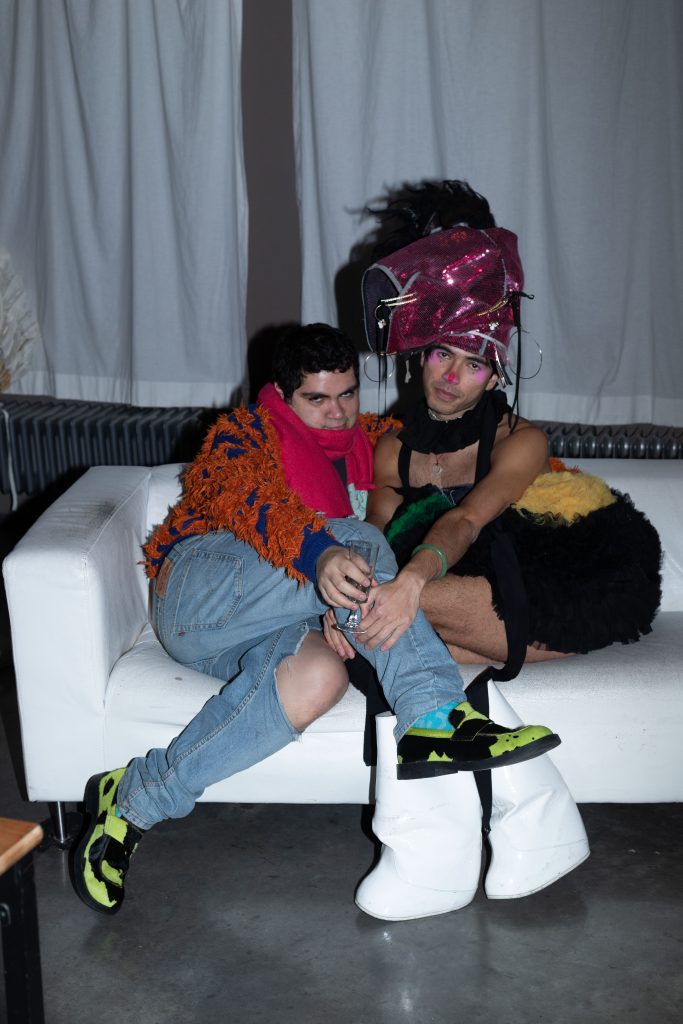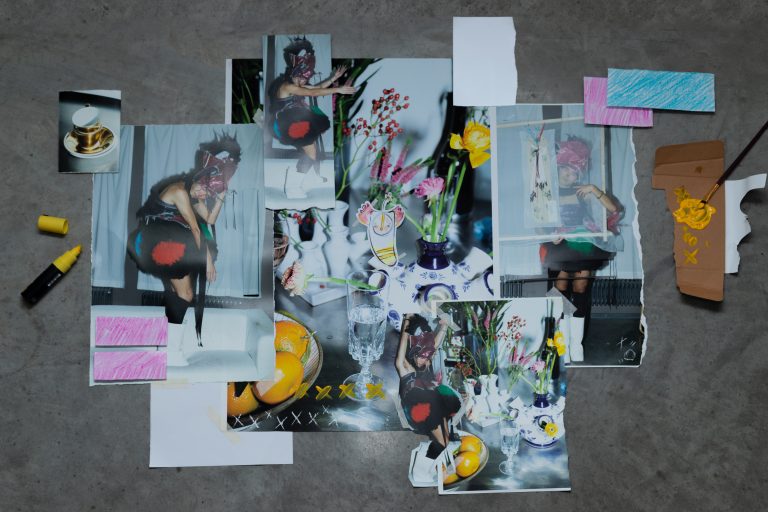
Brandon Wen and Amir Torres aren’t only friends and colleagues, they are also collaborators.
Wen grew up in LA and, like Torres, went on to study at the Royal Academy of Fine Arts in Antwerp, Belgium. Wen is following in Walter van Beirendonck’s footsteps, having been recently appointed as the creative director of the fashion department. Having discovered a passion for art during his fashion degree, Torres teaches fashion illustration. Together, they are the first non-European teachers of the school.
For hube, they created an exclusive performance that blurs professions, and the steps that go into building them. The meaning of the work will be established in the moment of performance, says Wen. We sat down with Wen and Torres to discuss all things performance, fashion, and Antwerp.

